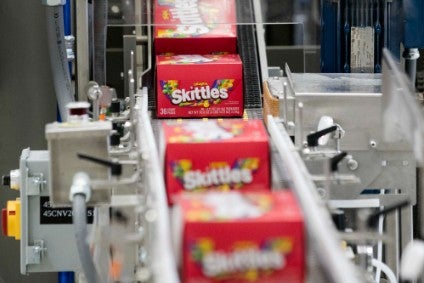
Mars has defended its continued use of synthetic colourings after setting aside a pledge made five years ago to no longer use the ingredients in products.
In February 2016, the M&M’s and Skittles owner, while stating all ingredients it used were safe, set out plans to remove “all artificial colours” from its human food products “as part of a commitment to meet evolving consumer preferences”.
US consumer watchdog The Center for Science in the Public Interest has noted how Mars’ self-imposed deadline has passed without the company fulfilling its pledge.
The CSPI, reflecting on the sale of Mars’ products in the US, claimed the confectioner had “abandoned that 2016 commitment to remove Red 40, Yellow 5, and other controversial synthetic dyes from its products, despite those dyes’ clear links to behavioural problems in children”.
It added: “Ironically, the global candy giant continues to congratulate itself for removing the chemicals from the European versions of its candies.”
On the Mars website, a policy statement says “consumer expectations” about the use of colourings in food “differ widely across markets and categories”. The company said it had therefore decided to pursue a “more locally tailored” approach.
It adds: “For dinnertime foods across our global Mars Food portfolio, we maintain our commitment to not include colours from synthetic sources and instead use natural colours from food sources to enhance our products. For instance, we use paprika to provide richer colour in our Spanish-flavoured rice.”
The position on what Mars calls its “treats” products is different. “For treats, however, we found that many of our consumers across the world do not, in fact, find artificial colours to be ingredients of concern,” Mars says.
“For that reason, we will continue to prioritise our efforts to remove artificial colours in Europe – where consumers have expressed this preference – but will not be removing all artificial colours from our Mars Wrigley portfolio in other markets. As always, we will continue to offer a range of treats that are already free from artificial colours for consumers in all markets who favour this.”
The company adds: “This shift in approach is consistent with our stated desire to meet evolving consumer preferences, which was the bedrock of our 2016 announcement.”
Lisa Lefferts, senior scientist at the CSPI, said the watchdog thinks Mars' policies in different markets are motivated by legislation. "We believe Mars was far more motivated to remove dyes from its products marketed in Europe than the US by stricter regulations in Europe that require warning labels for most dyed foods."
A Mars spokesperson told just-food: "In 2016, Mars Incorporated announced its ambition to remove all artificial colours from its human food portfolio globally, based on our belief, at the time, that a critical mass of consumers was seeking more natural ingredients and would welcome this change.
"Since making this commitment, a cross-functional Mars team has dedicated significant attention and resources to develop new ingredients, secure regulatory approvals, address manufacturing readiness, and dive more deeply into the needs and expectations of our consumers. Mars Wrigley products, like M&M's, Skittles and Starburst, are known for their great taste, high quality, and bright, fun colours.
"We found that the majority of our US consumers appreciate the current vibrant palette used in their favourite treats. So, Mars will not remove all artificial colours from the entire portfolio, but will continue to offer a variety of options free from artificial colours, such as Snickers, Twix and Dove Milk and Dark Chocolate. This approach is consistent with intent to meet evolving consumer preferences."
The spokesperson added: "Following the investment of significant time and resource first mentioned below, we have found that consumer expectations regarding colours in food differ widely across markets and categories. This has motivated us to re-evaluate our global intent and seek to identify approaches that are more locally tailored to address these differences."



